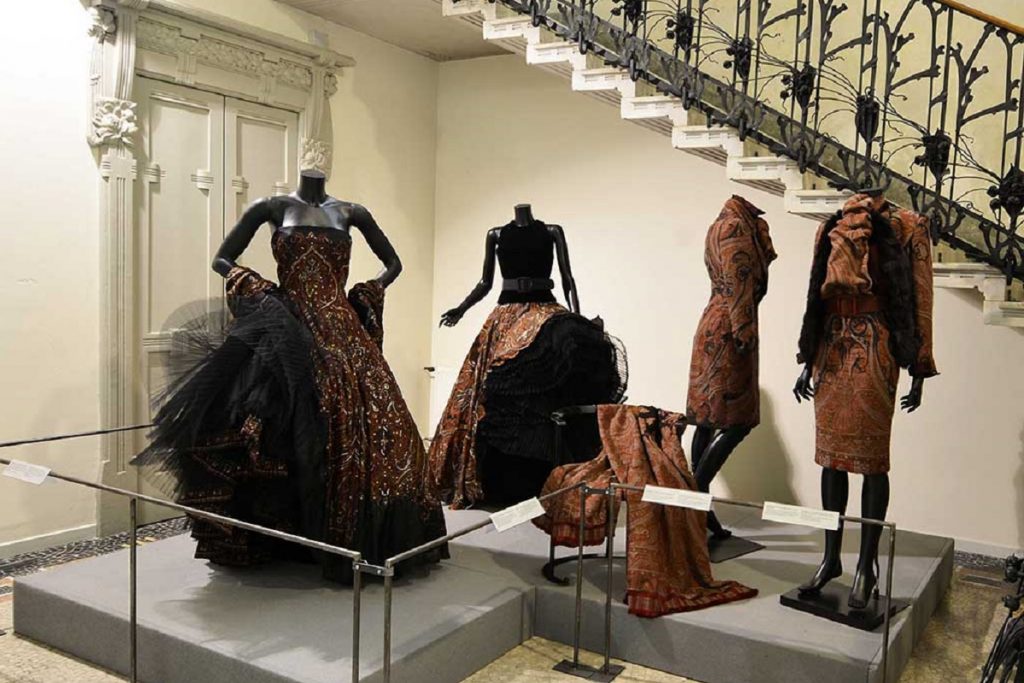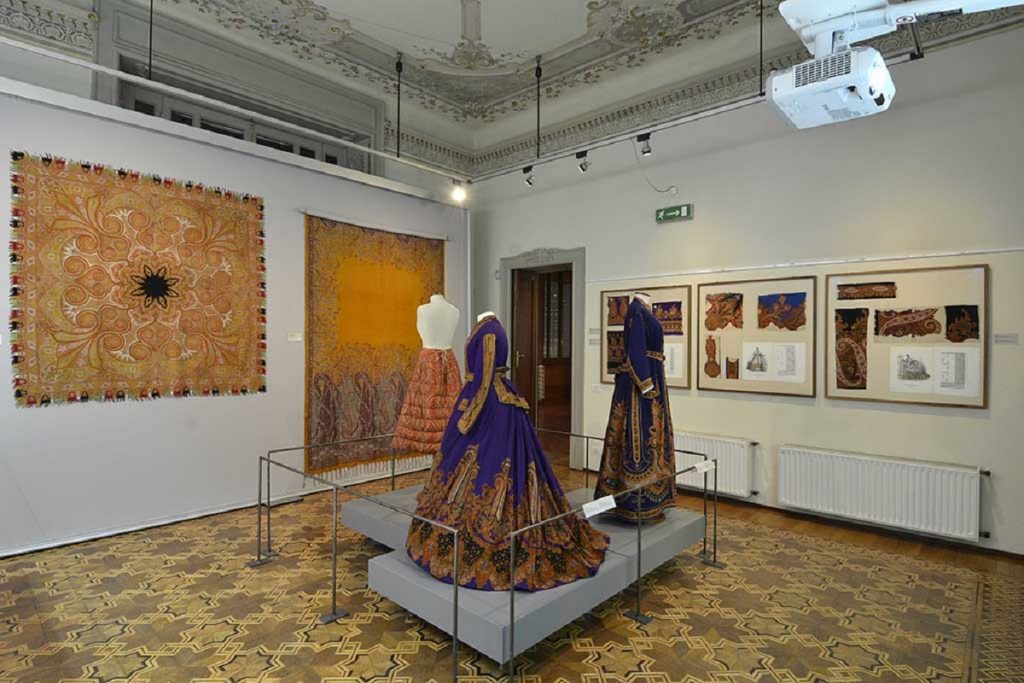Cashmere, the Sign in Motion
The boteh or paisley pattern – also referred to as Cachemire in Italian – is a seducing design with ancient origins that recalls exotic fantasies and remote countries. This drop with a curved extremity has been drawn and re-drawn in countless variations. Very few decorative motifs have left such a marked trace in the history of textiles and fashion, which are still cast under its magical spell today.
The exhibition Paisley pattern, marks in movement, curated by Margherita Rosina and Francina Chiara, is organized by Fondazione Antonio Ratti (FAR) in partnership with Comune di Cernobbio. It will be held from June 18th to September 18th 2016 at Villa Sucota in Como and Villa Bernasconi in Cernobbio.
The paisley design is a contemporary classic, present in many historical archives of the textile manufacturers of Como. It has long provided various chances for textile operators – from designers to technicians – to display their outstanding skills, which are now recognized around the world as the soul of Como’s textile industry. More than 150 exhibits – ranging from textiles to scarves, dresses, accessories and ties – will guide visitors across an itinerary that traces the evolution of this mythical pattern in different countries and historical periods.
The exhibition
The chronological and thematic itinerary of the exhibition enhances both ancient textiles from the FAR collection and modern fabrics, lent for the occasion by the archives of the textile industries operating in the Como district. The display includes many Indian and European shawls, never exhibited before and purposefully restored. These artefacts originally belonged to Antonio Ratti’s personal collection: the entrepreneur collected shawls throughout his life and was so deeply fascinated by the paisley motif to make it the iconic symbol of his textile production. In addition, a selection of dresses shows how paisley has been decorating dresses since the nineteenth century. Among the historical pieces there are a 1907 – Drecoll evening cloak, a velvet caraco, created in the Middle-East at the end of the XIX century and a kimono shape gown, part of Gabriele D’Annunzio’s wardrobe for guests, lent by the Vittoriale. Fashion is also greatly represented by a Valentino dress, worn by Patty Pravo for a photoshoot published by Vogue magazine, a white lace chemisier by Daniel Hetcher and other creations by Mila Schön, Lancetti and Gianfranco Ferré Haute Couture.
Images © Fondazione Antonio Ratti.

